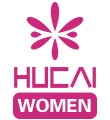China vs Vietnam: Comparing the Best OEM Sportswear Manufacturers for Premium Brands
1. Why the Manufacturing Base Choice Matters for Premium Sportswear Brands
For established, high‑end sportswear brands, choosing a manufacturing partner is not just about cost—it's about brand integrity, technical support, innovation, and supply‑chain reliability. Whether you source in China or Vietnam, each location has a distinct profile. Understanding the difference helps you match your brand's growth stage, product complexity (yoga, fitness, golf, seamless, outerwear), and market positioning (Europe / US / Australia / Middle East).
2. China: Strengths & Challenges
✅ Strengths
- Unmatched manufacturing scale and depth—from fabrics to trims, to full production.
- High-end technical capability: advanced functional fabrics, seamless bonding, laser cutting, high‑precision OEM/ODM.
- Very mature supply chain and infrastructure: local access to fabrics, accessories, and logistics.
⚠️ Challenges
- Rising labour and overhead costs.
- For very price‑sensitive orders or basic styles, China may not offer the lowest unit cost.
- Some logistics complexities, but overall infrastructure remains robust.
3. Vietnam: Strengths & Challenges
✅ Strengths
- Labour costs and overheads generally lower than China, making it attractive for cost‑driven manufacturing.
- Growing apparel manufacturing base with improving quality and capacity.
⚠️ Challenges
- Supply chain ecosystem is less mature compared to China.
- Lead‑times may be longer due to fabric imports.
- Fewer factories capable of high‑end seamless or bonded products.
4. Side‑by‑Side Comparison Table
| Criterion | China | Vietnam |
| Manufacturing scale & capacity | Very high; multi‑category, complex production support | Medium to high; growing base but fewer large factories |
Technical / R&D / customization | Advanced fabric innovation, seamless, high‑end finishing | Developing; fewer high‑tech activewear facilities |
Unit cost (for standard goods) | Higher but efficient due to supply‑chain depth | Lower, but hidden costs for complexity |
| Lead time / supply‑chain integration | Shorter due to local material sourcing | Longer due to imported materials |
| Ideal brand‑profile fit | Premium brands, complex collections | Value brands, volume production |
Risk factors | Rising labour costs | Supply chain maturity, limited capacity |
5. Strategic Guidance: Which Base for Your Brand?
If your brand is mature and targeting high-end markets (Europe, US, Middle East) with technical, functional, premium‑priced activewear, China is likely the stronger base. If your brand aims to balance cost and volume with simpler product lines, Vietnam offers a competitive option. Many brands adopt a dual‑country sourcing model—using China for technical/high-margin lines, and Vietnam for cost‑sensitive or large-volume production.
6. Action Plan for Your Sourcing Decision
1. Map your product complexity and identify which requires high-tech production.
2. Define your MOQ and speed requirements—China supports smaller high-end runs, Vietnam suits large-volume orders.
3. Evaluate sample & lead-time efficiency.
4. Verify local fabric sourcing and supply chain integration.
5. Consider logistics and post-production service capacity.
6. Align your sourcing base with long-term brand strategy.
7. Align Manufacturing Base with Brand Strategy
The best OEM base is not just about geography—it's about fit. For mid‑to‑high‑end brands (MOQ around 100, premium positioning, design‑driven collections), leveraging China for high‑spec products and Vietnam for complementary lines provides both innovation and cost efficiency.
Want to evaluate OEM/ODM options across China and Vietnam with a trusted partner who understands both markets? Contact HUCAI to review sourcing strategies and identify the best manufacturing base for your brand's next season.





